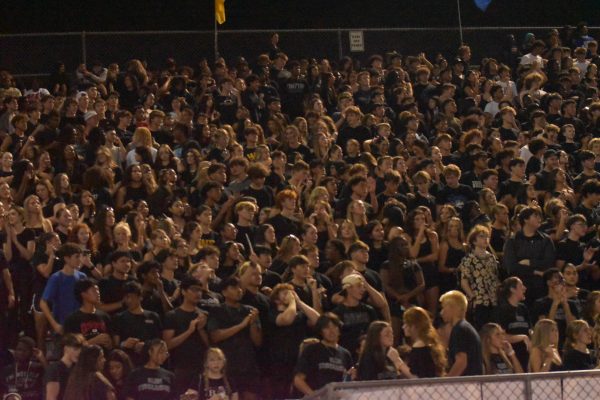Concussions Cause Concern for Student Athletes
Trainers assist football player during game. Concussions are a large concern for football players.
Thousands of high school students are affected every year by the concussions they receive from playing sports. In fact, cases of concussions among teens ages 14 to 19 have risen by 200% in the last decade, according to Southwest Athletic Trainers’ Association (SWATA). Although one minor concussion does not have long-term effects, multiple concussions, even minor ones, can and will cause permanent brain damage.
Football is the sport in which the most athletes get concussions, with “three times as many catastrophic football injuries among high school athletes as college athletes,” according to SWATA. However, according to many trainers and doctors, it is followed closely by soccer. Klein High trainers often see a couple athletes a week with concussions, usually from football, soccer, and cheerleading.
“Normally, like one or two come into the training room in a week,” trainer, senior Katherine Earthman said. “There’s a lot of concussions in soccer too because people hit their heads a lot.”
Often times, the concussions are ignored by the athletes themselves, even though it can cause permanent brain damage and more awareness has been brought to the issue of large amounts of concussions in athletes. According to SWATA, “50% of “second impact syndrome” incidents – brain injury caused from a premature return to activity after suffering initial injury – result in death.”
“I don’t think athletes personally take it as a big deal,” senior Megan Ellison said. “I know I didn’t. I was told to stop playing and I didn’t and I got two more after which has definitely affected everything.”
Texas legislation has included an entire subchapter of laws to help prevent student athletes from permanent brain damage and to alleviate the number of concussions (and multiple concussions) in students.
“When the initial concussion occurs we do assessments to evaluate if it is something that needs to be followed up with to see if it is a concussion,” trainer teacher Chrissy Cope said. “Once we determine that it is a concussion, there is paperwork that has to be filled out. It has to be documented for state law. With that they have to go and be seen by a doctor who’s trained in concussion management. It’s a lot of monitoring and just waiting for them to get better. There is no rehab or anything like that that we can do, It’s a waiting game pretty much.”
Even though associations are bringing awareness to the effects of concussions and states are passing laws to help alleviate the amount of concussions, there is little that can actually be done to prevent concussions. Research has brought forth more protective equipment for athletes, and other than that there is little that can be done. Once athletes get a concussion, the main thing doctors can do is to make sure that they are not playing sports while the concussion is still affecting them.
“Mostly the treatment is protecting their brain from further injury with physical and cognitive rest and using medications to help with symptoms,” sports doctor, Scott Rand MD said. “Vestibular therapy or balance therapy is also used commonly to help concussions that don’t get better in a couple weeks. There is no specific treatment for concussions medically. It gets better on its own.”
Your donation will support the student journalists of Klein High School. Your contribution will allow us to purchase equipment and cover our annual website hosting costs.







